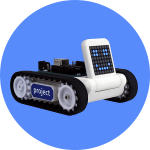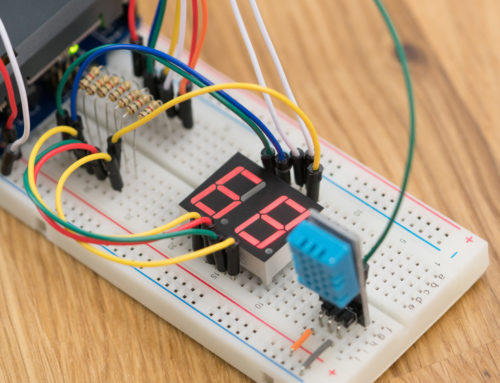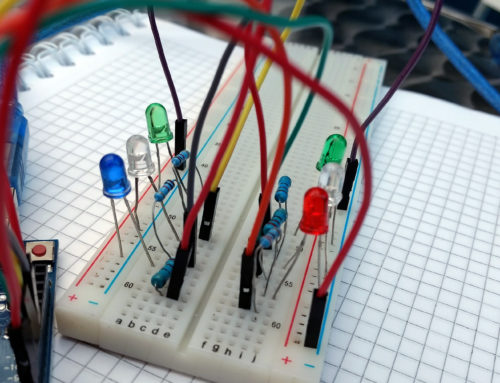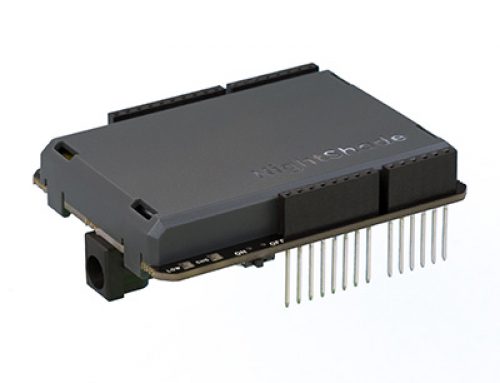
Example of Automation
Think about when you turn on a faucet or shower and you wait for the temperature to be just right. First, it’s too cold, so you turn it all of the way hot. Then it gets too hot, so you turn it colder. Then it’s a little too cold, so you turn it just a little hotter. I just described a process that you’ve probably done hundreds of times. Instead of repeating that process hundreds of more times, you could hook a computer to your faucet with a thermometer and motor and have the computer adjust the temperature for you. The cost of these parts has never been more affordable and the development process has never been easier.
History of Automation

An early 19th-century illustration of Ctesibius’s (285–222 BC) water clock.
People have been automating tasks for thousands of years. Early automation was accomplished by mechanical means; mechanisms that repeated a task. The first known automation was the water clock, which was first invented by a Greek engineer named Ctesibius (285-222 BC). This clock used falling water to keep time. Later, other processes were automated including thermostats (1620 AD), automatic sail adjustor for windmills (1745 AD), and an automatic weaving loom (also in 1745 AD). These devices helped humanity make great leaps in their efficiency. However, these machines were custom built to do one task and only one task.
As technology developed people looked for a way to make a more versatile device. A machine that could be made to perform a task by giving it a set of instructions and then later it could be used to perform a different task by simply giving it a different set of instructions. Such a machine could even be given instructions to change its instructions based on a condition. The ability to make a choice, based on information, and then act differently depending on the information. This device is known as the universal Turing machine (UTM) and is the basis for the modern computer.

ENIAC was the first electronic, Turing-complete device, and performed ballistics trajectory calculations for the United States Army.
Early computers were so large that they spanned multiple rooms and they were so expensive that an institution (college, business, government department, etc.) might be able to afford to have one. As our technology has continued to develop, the cost and size of computers have decreased dramatically. Today, you can get a computer on a single microchip that is more powerful than the old multi-room computers and it will only cost a dollar or two.
Automation in Your World
While this is all very technical and it might seem a little out of reach, I assure you that it’s not. With some simple instructions and minimal electronics skill, you can accomplish more than you would believe. Microcontrollers are tiny little computers that interface with electrical circuits. They can sense the voltages in a circuit, output voltages to drive a circuit, perform any mathematical or logical functions that you can describe, and communicate to other devices through digital protocols like UART, SPI, and USB. These miniature computers are at the heart of many of the devices that you use every day. Microwaves, smart coffee pots, digital thermostats, and even the computer mouse that you’re holding have microcontrollers inside of them.
Where to Start
Now, I understand that going to a giant IC manufacturer and trying to implement their microcontrollers is very daunting; I’ve done it. There are tons of little software settings that have to be set just right for the computer to do anything. Also, the circuit around the microcontroller chip must provide it with everything that it needs to operate correctly. This requires a little bit more study in electronics that most people care to do. Thankfully, some teachers over in Italy decided to create a bridge for this gap and they founded an organization called Arduino.
The Arduino organization sought to make microcontroller development accessible to everyone. They did this by creating a stable hardware platform and a software development environment that handled the nitty-gritty for you. Now, a creator like yourself only needs to worry about the circuitry and programming that actually does what you want to do, without the burden of supporting the microcontroller itself.
Some Inspiration to Get You Motivated!
If you’re ready to jump in and learn how to get started with Arduino, head to our Arduino tutorials, or if you would like to be further inspired, check out these amazing projects that people have created with Arduino! If you have a project or product design that you would like help completing, head over to our Engineering Services page.
Secret Knock Detecting Lock
Have you ever wanted to have a door attendant, but you couldn’t afford to hire one? This creator made an Arduino unlock his door when it hears the secret knock.
The microcontroller monitors the microphone (piezo transducer) for knocks and then times the pauses between the knocks. Then it compares the knock pattern to the recorded secret knock. It the pattern matches, it turns the lock. If it does not match, it does not unlock the door. It just keeps listening for the correct knock.
Time Machine Glove
Have you ever wanted to be able to stop, fast-forward, or rewind time? Here is a DIY time machine glove that will do just that! (sort of)
While the glove might not actually be manipulating time, the effect is pretty cool. The Arduino board is monitoring the motion of his hand and controlling a strobe light. When it detects the flourish motion it turns the strobe light on and off. When the light is on, the speed of the blinking is adjusted based on the tilt of his hand giving the effect of time speeding up or slowing down.
Arduino Plays Piano Tiles
Piano Tiles is a simple game where you have to tap on all of the black keys without touching the white keys. The game is interesting, though quite repetitive and humans have a difficult time performing a task exactly the same way every time, very quickly. In situations like this, we eventually make a mistake and then it’s all over. Here, someone decided to create a machine to perform this simple task automatically.
The creator of this machine has used an Arduino microcontroller (tiny computer) board to monitor small photosensors, which detect the black tiles. When the computer detects a black tile, it commands the servo motor to move the arm and tap it. The program is very simple, yet the results are quite impressive.
Balancing a Ball on a Plate
Balancing a ball on a plate isn’t the easiest thing to do. Stop trying for a moment and you’ll be chasing the ball across the room. Computers are great at this kind of thing because they don’t suffer any losses in attention span.
In this project, the Arduino is monitoring the position of the ball on the plate and tilting the plate accordingly to keep the ball in the correct position.
Musical Floppy Disk Drives
Maybe you have a bunch of floppy disk drives sitting around collecting dust. Did you know that they can double as a musical instrument?
The Arduino is able to make the floppy drives make music by moving the spindle in little increments at different intervals, creating sound waves of different frequencies. Multiple drives let you create multiple musical notes at the same time, like an orchestra!
There is truly no limit to the number of things that you can do with computers and electronics. I highly recommend that you give it a try. Take a look at our tutorials and our inventory and then run your imagination run wild.
Links





Leave A Comment
You must be logged in to post a comment.